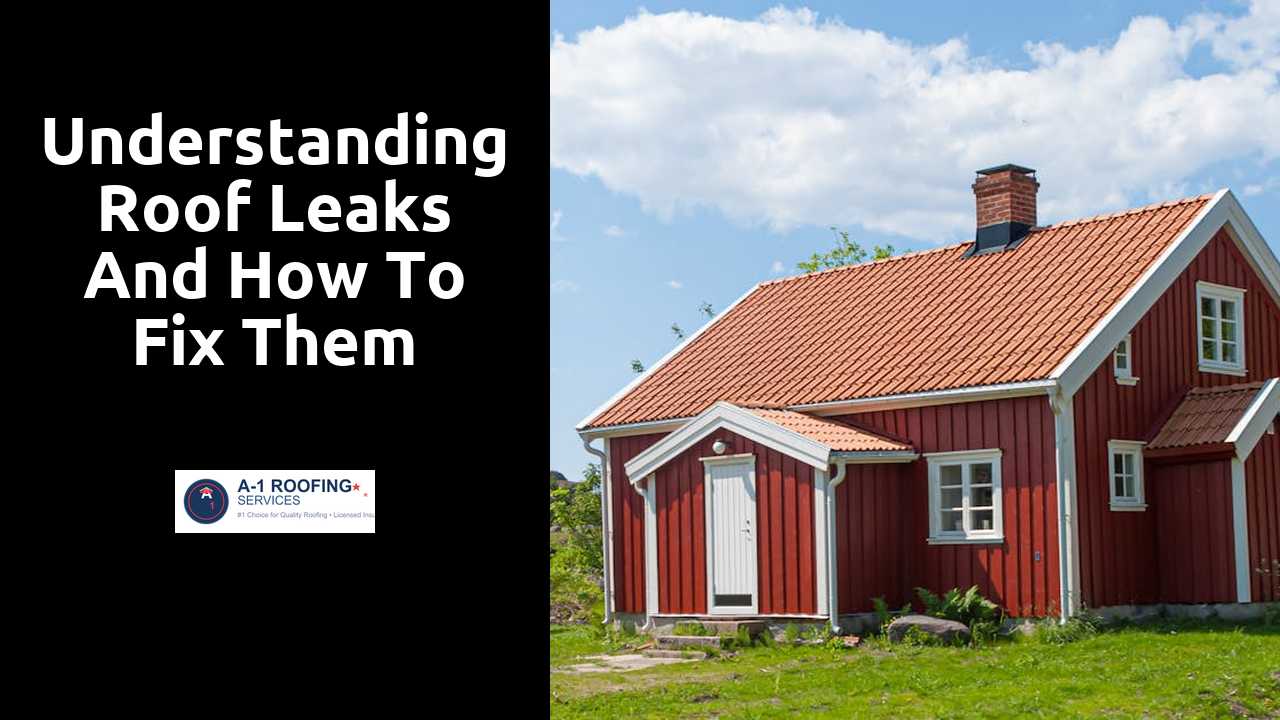
Understanding Roof Leaks and How to Fix Them
Table Of Contents
Temporary Solutions for Immediate Relief
A leak can lead to extensive damage if not addressed promptly. One of the most practical ways to manage a sudden roof leak is by using tarps. These temporary covers can provide immediate protection against further water intrusion. Ensure that the tarp is securely fastened over the affected area. Weight it down with heavy objects to prevent it from blowing away in windy conditions.
Another quick fix involves using sealants to patch small gaps or cracks. Select a waterproof sealant specifically designed for roofing materials. Clean the area surrounding the leak before applying the sealant for optimal adhesion. This step can act as a stopgap measure until more permanent repairs can be made. While these methods offer relief, they are not replacements for a thorough inspection or comprehensive repair.
Hop over here to discover more.
Utilizing Tarps and Sealants
When faced with a roof leak, immediate action is crucial to prevent further damage. Tarps serve as a practical and temporary solution that can cover the affected area, diverting rainwater away from the leak. Ensure that the tarp extends beyond the leak’s boundaries to protect adjacent areas. Secure the tarp with weights or tie-down lines to prevent it from moving or blowing away in strong winds. This method provides a barrier against the elements while allowing you to plan for a more permanent fix.
Sealants can also play an essential role in addressing smaller leaks and cracks. By applying a high-quality roofing sealant directly to the damaged area, you create a waterproof barrier that can effectively mitigate minor leaks. It’s important to clean the area thoroughly before application for the best adhesion. This approach is particularly useful for small punctures or seams that have begun to separate. Both tarps and sealants serve as vital tools in managing unexpected leaks until a more lasting repair can be executed.
When to Call a Professional
Homeowners should be vigilant about identifying when a leak has surpassed their ability to manage it. If the source of the leak is difficult to find or requires climbing onto the roof, seeking professional help is vital. Signs such as significant water damage, mold growth, or recurring leaks indicate that the problem may be more complex than it appears. A qualified roofing contractor can assess the situation, utilizing tools and expertise that an average homeowner may not possess.
Attempting to fix complicated issues without proper knowledge can lead to further damage and increased repair costs. Professionals not only bring experience but also access to specialized materials and techniques. If repairs involve structural elements, electrical systems, or intricate roofing designs, enlisting the help of an expert ensures both safety and effectiveness in addressing the leak. Making the smart decision to consult a professional can ultimately save time, money, and stress in the long run.
Identifying Complex Issues
Sometimes, roof leaks can stem from more than just minor issues like missing shingles or small cracks. They may be indicative of complex underlying problems such as structural damage, compromised flashing, or deteriorating materials. Identifying these complexities often requires a careful inspection of the roof's overall condition. Look for signs of sagging or uneven sections, as these can suggest that the roof's structural integrity has been compromised.
Additionally, leaks may not always be directly above the wet spots you see indoors. Water can travel along beams and rafters before making its way to the ceiling. Pay attention to walls and other areas that show signs of water damage. Discoloration, mold growth, or peeling paint can provide clues about the leak's origin and severity. It may also be helpful to observe the roof during a rainstorm to pinpoint active leaks more effectively.
Long-Term Maintenance Tips
Routine inspections of the roof should be a priority for homeowners. Checking for signs of wear and tear, such as missing shingles, cracked flashing, or rusted gutters, can help catch potential issues before they escalate. Taking time to visually assess the roof from the ground or using binoculars can provide a good overview. Additionally, addressing small problems promptly can save costs in the long run.
Cleaning the roof and gutters on a regular basis prevents debris accumulation that may cause water to back up. This can lead to leaks or other serious damage. Removing leaves, branches, and other materials ensures proper drainage. Using a mixture of water and mild detergent can help remove stains and moss that may compromise the integrity of the roofing materials. Regular maintenance fosters longevity and reliability, keeping the home protected against the elements.
Regular Inspections and Cleaning
Scheduled inspections are essential in maintaining the integrity of a roof. Homeowners should aim to perform these checks at least twice a year, particularly in the spring and fall. This routine allows for the early identification of potential leaks or damage caused by weather elements. An inspection typically includes examining shingles for cracking or missing pieces, checking flashing around chimneys and vents, and ensuring gutters are clear of debris.
Cleaning the roof is equally important for its longevity. Cleaning off leaves, moss, and algae buildup helps prevent water retention, which can lead to leaks over time. Additionally, maintaining clear gutters ensures proper drainage, mitigating the risk of overflow that can damage roofing materials. Regular maintenance not only prolongs the life of the roof but also provides peace of mind regarding its overall condition.
Related Links
Best Practices for Repairing Asphalt Shingle RoofsPros and Cons of DIY Roof Repairs vs Hiring Professionals